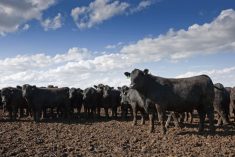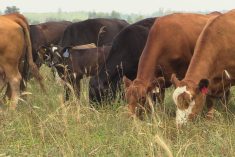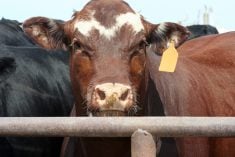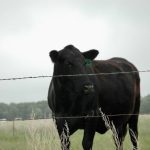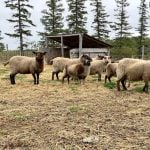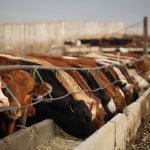Western Canadian feeder cattle traded from $4 lower to $3 higher over the past week. Feeders coming on the market at this time of year have various quality features which caused a wide range of prices for similar-weight cattle.
Alberta packers were buying fed cattle in the range of $199 to $200, down $2 from seven days earlier, which weighed on feeding margins. Uncertainty regarding the fed cattle market for the summer months also caused a softer tone for shorter-keep replacements. Canadian box beef prices have come under pressure due to a building of U.S. beef stocks. Until these larger beef supplies are liquidated, fed cattle prices may stagnate or grind lower for the time being.
Read Also

U.S. grains: CBOT soybeans, corn, wheat fall in USDA data aftermath
Chicago grains took a dive on Friday, following a closely watched U.S. government crop report and the release of export data that could provide clues into Chinese buying.
Alberta prices appeared to show a $3-$6 premium over eastern Saskatchewan and Manitoba values across all weight categories. U.S. order buyers have been on the sidelines due to the smaller sale volumes.
Feedlot operators continue to anticipate tighter yearling supplies later in the fall period, electing for early ownership. Lighter calves were well bid; features included healthy larger-frame black Angus-based steers weighing just over 600 pounds, selling for $320 in central Alberta. The fall yearling run has been spread out, with smaller numbers the past few years. Secondly, feed grain costs are generally lower for these cattle gaining the bulk of weight from August through December. Therefore, the market for cattle under 650 lbs. should stay firm moving forward.
Lethbridge barley was trading from $210 to $212 per tonne delivered this past week, down $5 to $7 from seven days earlier. Feed wheat was trading at $208 in the same area. While 2014-15 barley ending stocks will be historically low, feed wheat supplies will remain abundant for the remainder of the crop year, limiting the influence on feeder cattle prices.
— Jerry Klassen is a commodity market analyst in Winnipeg and maintains an interest in the family feedlot in southern Alberta. He writes an in-depth biweekly commentary, Canadian Feedlot and Cattle Market Analysis, for feedlot operators in Canada. He can be reached by email at [email protected] for questions or comments.







